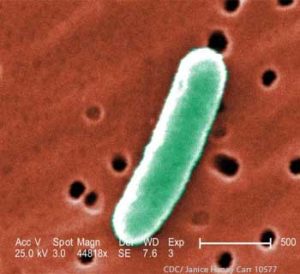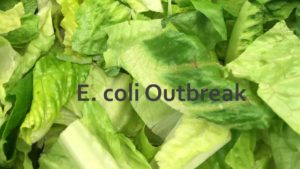Shiga toxin-producing E. coli (STEC) are a well-recognized cause of serious illness producing bloody diarrhea, hemorrhagic colitis, hemolytic-uremic syndrome (HUS), and thrombotic thrombocytopenic purpura (TTP). The most common serotype in this group is E. coli O157:H7 but there are six other serotypes that produce these toxins. These non-O157 STEC include O26, O45, O103, O111, O121, and O145.

E. coli O145 Food Poisoning Information
E. coli O145 is similar to the more prevalent strain O157:H7 in that it is an enterohemorrhagic Escherichia coli (EHEC) and a STEC. Shiga toxins are poisonous to humans and that’s why they can cause such serious injury or death.
E. coli O145 outbreaks are more common in Europe and Australia than they are in the United States. One reason for this that tests in the U.S. are focused on O157:H7, so O145 infections are most likely underreported.
E. coli O145 Outbreak Linked to Romaine Lettuce

May 6, 2010 – An E. coli O145 outbreak linked to shredded lettuce sickened people in Michigan, Ohio, New York, and Tennessee. The lettuce was produced by Freshway Foods. Three of the E. coli O145 victims developed hemolytic uremic syndrome (HUS), a type of kidney failure. In response to this outbreak, Freshway Foods issued a lettuce recall that affected restaurants, cafeterias, and grocery stores, including Kroger, Giant Eagle, Ingles Market, and Marsh. The recalled lettuce may have been sold at the deli counter or in a “grab and go” salad.
2012 E. coli O145 Outbreak
In 2012, a nine-state E. coli O145 outbreak sickened 18 people. Health officials were not able to determine the specific food source of the outbreak.
If you developed an E. coli O145 infection from contaminated food, you can request a free case evaluation with our experienced E. coli lawyers by using our free online consultation request form or by calling 1-888-377-8900 (toll-free). We are a national food safety law firm.